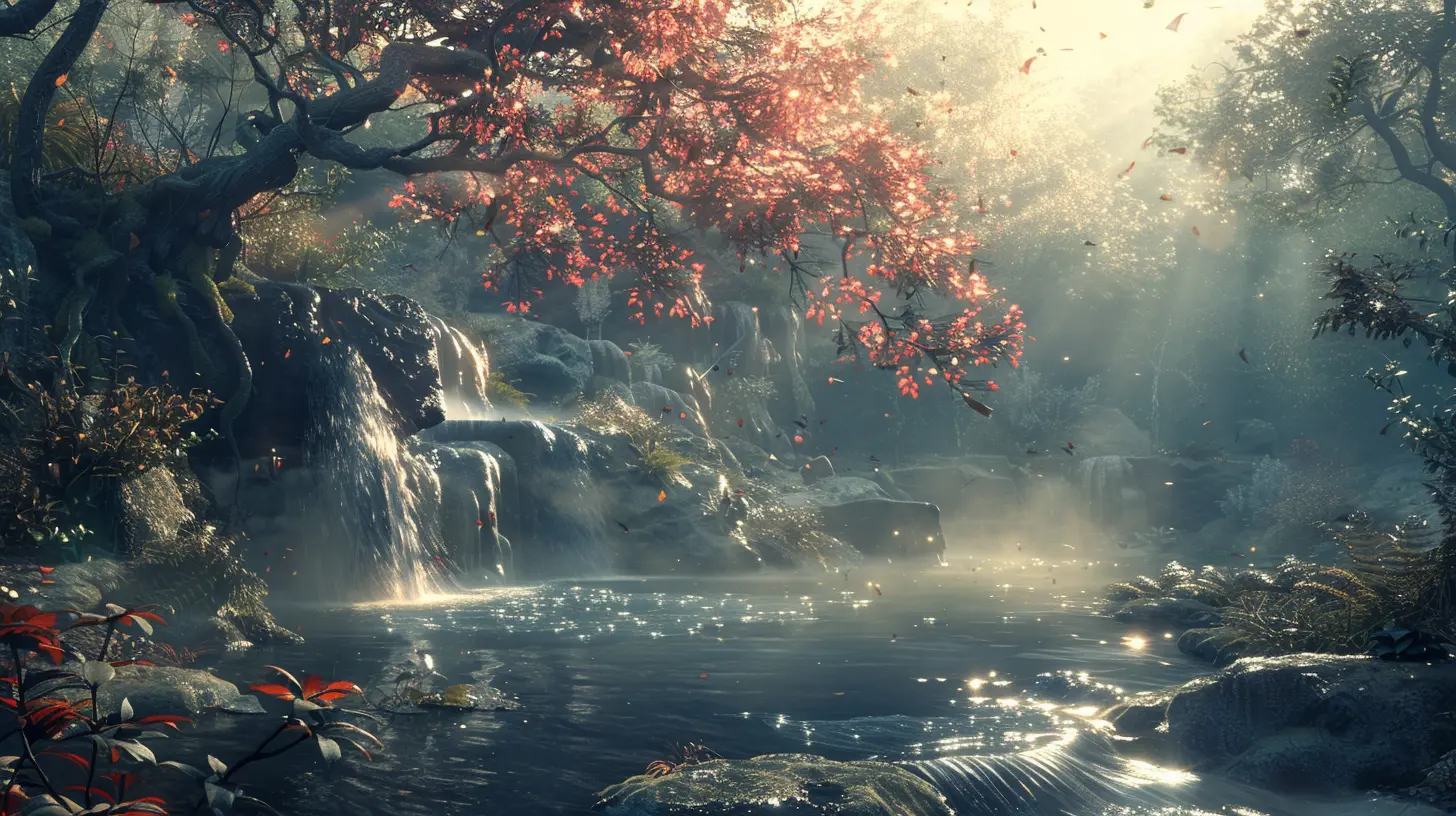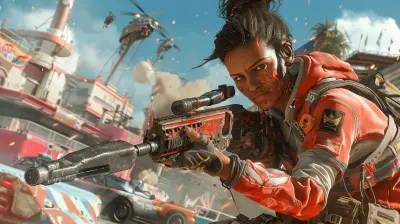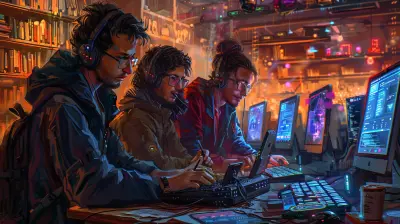Evolving Soundscapes: How Game Music Adapts to an Interactive World
31 May 2025
Gaming has never been just about flashy visuals and pixel-perfect graphics. Sure, a jaw-dropping display of digital landscapes can pull you in, but let’s be real—what truly makes a game memorable is the way it resonates with your senses. And at the heart of that experience lies something often underestimated or overlooked: the music. Oh yeah, that’s right. Let’s talk about game music—those soundscapes that evolve and adapt as you play.
Why do we connect so deeply with the music in games? It’s because game audio does so much more than fill the silence; it creates atmosphere, builds tension, and speaks a thousand unspoken words. But here's the twist: unlike a movie soundtrack that’s set in stone, game music changes in real time, mirroring your actions. It’s like having your own personal DJ that keeps up with your every move. Today, we’re going to dive into how this magic happens and why adaptive soundtracks are the unsung heroes of modern gaming.
The Role of Music in Games: More Than Just Background Noise
Let’s start at the basics—why does gaming even need music? Think about it: when you’re sneaking through a shadowy corridor in a horror game, would the experience feel the same without that creeping, ominous tune in the background? Not a chance. Music is what turns an ordinary scene into a heart-pounding, edge-of-your-seat thrill ride.Instead of just being a passive accompaniment, gaming soundtracks are an active part of the experience. They set the tone, evoke emotions, and even provide gameplay cues like letting you know danger is near or that you've just pulled off something epic. It's like the soundtracks have their own sixth sense. Cool, right?
The Evolution of Game Music: From Beeps and Bloops to Cinematic Masterpieces
Let’s take a quick trip down memory lane. Back in the day, game music was all about simplicity. Early consoles like the Atari 2600 had limited sound capabilities, so most music sounded like a series of cheerful (or occasionally chaotic) beeps and bloops. It was charming in its own retro way, but let's just say the emotional range was...limited.Fast forward to the SNES and Sega Genesis era, and things got more melodic. The soundtracks became catchier—sometimes even iconic. (Quick poll: who else still hums the Super Mario Bros. theme in the shower?) But even then, the music was still pre-programmed and looped endlessly. There wasn’t much flexibility.
Then came the big leap forward: CD-based consoles like the PlayStation. Now we had orchestras and full-blown compositions stepping into the gaming world. The tracks became more complex, filling players’ ears with high-quality audio goodness. But the real game-changer? When developers started experimenting with dynamic music.
What is Dynamic Music? (A Fancy Way of Saying Music That Changes!)
Dynamic music is a fancy term for soundtracks that adapt to what’s happening in a game. Unlike traditional scores that play the same way no matter what, dynamic music responds to how you play. Imagine speeding through a race in a car game. As you hit max velocity, the music swells, adrenaline pumping through your veins. Slow down or crash? The tempo eases to match your somber mood. It’s like the music’s reading your mind—or at least keeping tabs on your actions.How does it work? The secret lies in layers. Modern game soundtracks are built in stacks—different instruments or melodies come in and out depending on what’s happening. For example, in a stealth game, a soft, spy-like theme might play while you’re sneaking, but if you’re caught? BOOM. The percussion kicks in, and you know it’s time to run (or fight, if you’re feeling brave). 
Composers Gone Wild: How Game Developers Create These Adaptive Soundscapes
Here’s where things get really impressive. Game composers today have to think on their feet—they’re not just writing a piece of music; they’re creating a system. Think of it like this: instead of recording one song, they’re creating all the building blocks for a song that rearranges itself in real time.Take legendary composer Gareth Coker, for instance. His work on Ori and the Blind Forest is a masterclass in adaptive music. The melodies don’t just complement the gameplay; they move with it, blending seamlessly as you explore the breathtaking world of Ori. One minute you’re hearing soft, ethereal tones that evoke curiosity; the next, it’s a pulse-pounding orchestral score because—you guessed it—you’re in danger.
And then there's The Legend of Zelda: Breath of the Wild’s minimalist soundtrack. At first, you might think it's too subtle, but pay attention, and you’ll notice how perfectly it aligns with your actions. Running through Hyrule? Gentle piano notes trickle in. Spot an enemy? The music subtly shifts to amp you up. The result? A perfectly immersive experience.
Why Adaptive Music Matters: Emotion Meets Interaction
Alright, so we’ve established that adaptive music is impressive. But why does it matter so much? The answer lies in one word: immersion. When the music syncs up perfectly with what you’re doing, it feels more real. It bridges the gap between you and the game, making you feel like you’re smack dab in the middle of the action.Plus, adaptive music solves one of gaming’s biggest pitfalls: repetition. Imagine playing a 40-hour RPG with the same looped track blaring in every battle. Yeah, that’s a one-way ticket to Mute Town. But with adaptive scores, variety is built into the system. Each fight sounds fresh, and you’re never pulled out of the moment.
Tips for Spotting Great Adaptive Music in Your Favorite Games
Not sure if a game uses adaptive music? Here are a few signs to look out for:1. Subtle Changes in Tempo or Intensity
Notice how the music ramps up during boss fights or calms down in safe zones? That’s adaptive at work.
2. Different Tracks for Different Choices
Some RPGs use music to reflect your morality. Choose the noble path? Expect heroic tunes. Go full villain? Cue the dark, brooding orchestra.
3. Environmental Sounds That Fade In and Out
Great games blend ambient noise with music. Walk through a forest, and the rustle of leaves might fade into a calming melody.
The Future of Game Soundscapes: What’s Next?
As gaming technology evolves, so does the potential for music. VR and AR games, for instance, are already experimenting with 3D soundscapes. Imagine hearing an enemy approach from behind—not just from a visual cue, but because the music shifted subtly in your left ear.And with AI-generated music on the rise, composers might soon have tools that let them create even more personalized, real-time scores. Think of gaming soundtracks as living, breathing entities—less soundtrack, more sound experience.
Final Thoughts: A Symphony for the Players
It’s funny, isn’t it? Music in games doesn’t always get the recognition it deserves. But without it, gaming wouldn’t be the same. These evolving soundscapes are more than just background noise—they’re storytellers, mood-setters, and gameplay companions rolled into one.The next time you’re deep into a game, take a moment to listen. Really listen. You might realize the music is doing more than just filling the air. It’s shaping your adventure, one note at a time.
all images in this post were generated using AI tools
Category:
Original SoundtracksAuthor:

Lucy Ross
Discussion
rate this article
3 comments
Julianne McNaughton
Great insights on the role of music in gaming! It's fascinating to see how soundscapes enhance player immersion and experience.
June 13, 2025 at 2:29 AM

Lucy Ross
Thank you! I’m glad you found the insights valuable. Music truly transforms the gaming experience!
John Thomas
This article brilliantly captures the dynamic relationship between game music and interactivity. The evolution of soundscapes enhances player immersion, transforming gameplay into a multisensory experience. It's fascinating to see how composers adapt their craft to respond to player actions, making each moment uniquely memorable. Great read!
June 12, 2025 at 5:05 AM

Lucy Ross
Thank you for your insightful comment! I’m glad you enjoyed the exploration of how game music enhances player immersion and interaction. Your appreciation of the evolving soundscape is much appreciated!
Drake McElhinney
Game music: the only soundtrack where dodging enemies and dancing to the beat go hand in hand!
June 1, 2025 at 3:18 PM

Lucy Ross
Absolutely! Game music truly enhances the immersive experience, allowing players to sync their actions with the rhythm, creating a unique blend of engagement and artistry.



